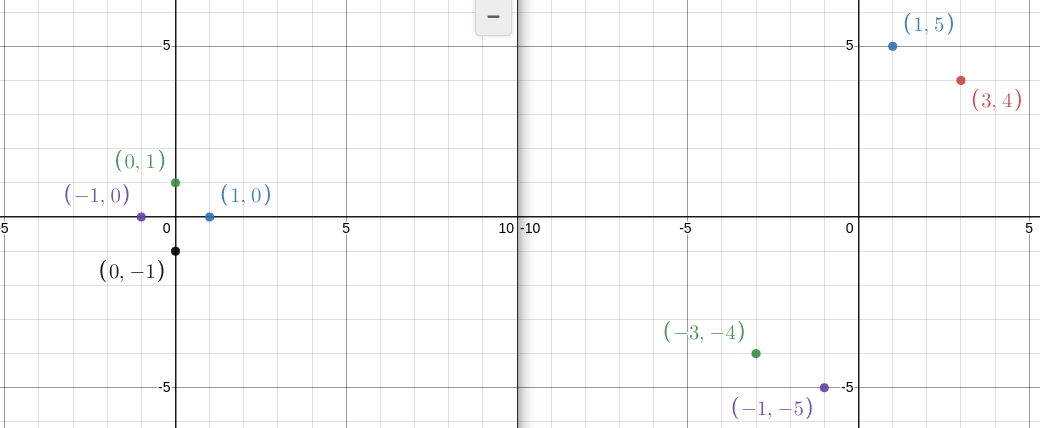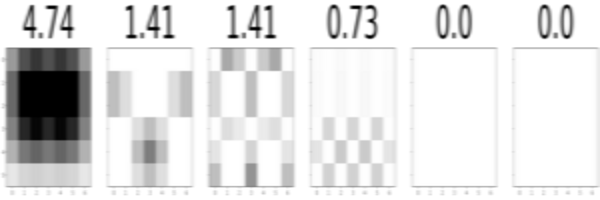Categories:
FACT
This is my Second BLOG
MY HANDLES
APPLICATION OF SVD
1,Image Compression
2,DimensionalityReduction
3,etc ...
QUOTE
"Sometimes you gotta run before you can walk." - Tony Stark
SVD, also known as Singular Value Decomposition, is one of my favorite mathematical concepts. When I started exploring this concept, I was amazed and came to appreciate the beauty of mathematics. In this following blog, I want to provide a clear explanation of SVD from both mathematical and programming perspectives. I have a clear understanding of SVD, and I will clarify any doubts and explore ideas beyond Singular Value Decomposition
prequesities :
#linear algebra | #data analysis | #machine learningIntroduction
Posted on September , 2023 in JayanthBlog
I don't know how to start, but I'll start. Many of us had the idea that math was boring, but it actually isn't. In the beginning of my math journey, I wondered why we use math in all fields like science, physics, and economics. After exploring linear algebra , quadratic programming and optimization problem , I realized that I had missed a lot of things, and my perspective on math completely changed. Coming to today's topic, SVD, also known as Singular Value Decomposition (SVD), is a mathematical technique used for factorizing a matrix into three simpler matrices. Actually, it is singular, and we have to express the matrix as a product of three values, but it's okay; we can express it like this. First, let's discuss some of the math concepts and also express them in the form of SVD.
Before we dive into the topic, do you have a basic understanding of linear transformations? Let's forget about the calculations for now and focus solely on the geometrical intuition. Imagine you have a piece of paper with a drawing on it. A linear transformation is akin to taking that piece of paper and stretching it, squashing it, or flipping it around, but without tearing or folding it. As a result, the drawing on the paper changes its shape, but it remains fundamentally the same drawing. This is what we refer to as a linear transformation, like giving the drawing a magical makeover
consider a matrix A =[ 3 , 1 ]
[ 4 , 5 ]
(x, y ) in the form of (3x+y , 4x+5y)
(1,0) => (3,4)
(0,1) => (1,5)
(-1,0) =>(-3,-4)
(0,-1) => (-1 ,-5)
applied a magical process and obtained new coordinates (x, y) transformed into the form (3x + y, 4x + 5y).
Now, let's substitute the following points: (1, 0), (0, 1), (-1, 0), and (0, -1),
and then plot them on a graph to observe the transformation.

Conclusion: Even though you place a small point at (1, 0), it transforms the circle into an ellipse. This is the beauty of linear algebra.
SVD factorizes A into three matrices:
U: An m x m orthogonal matrix (U^T * U = I), where U^T represents the transpose of U.
Σ (Sigma): An m x n diagonal matrix with non-negative real numbers on the diagonal. These diagonal values are called singular values and are arranged in descending order.
V^T (the transpose of V): An n x n orthogonal matrix (V^T * V = I) .
A = U * Σ * V^T
Before Singular Value Decomposition (SVD), there is another concept used to transform square matrices called eigen-decomposition. However, eigen-decomposition has some limitations, which is why SVD is used. SVD can be applied to any m×n matrix.
In SVD, a matrix is transformed into three matrices: U, Σ, and V^T. To explain these terms from last to first, V^T is an orthogonal matrix that you can think of as responsible for rotation, Σ is for scaling, and U is also involved in rotation.
That's it; this is a simple explanation of SVD. Don't worry about the calculation part; we are not mathematicians; we are programmers. So, I'll take a simple matrix and demonstrate how to transform it into the three SVD matrices
consider a matrix A =[ -4 , -7 ]
[ 1 , 4 ]
A*A^T = [65 , -32]
[-32 , 17]
it is simply matrix and it transpose multiplication
and calculate characterstic equation we get λ^2 -82λ + 81 = 0
eigen values λ = 1, 81
eigen vector λ1 (1) = [0.5 , 1]2X1
eigen vector λ2 (81) = [-2 , 1]2X1
normalize the eigen vector by magnitute we get
eigen vector λ1 (1) = [0.447 , 0.894]2X1
eigen vector λ2 (81) = [-0.894 , 0.447]2X1
U = [0.447 , 0.894]
[-0.894 , 0.447] 2x2
Σ = [9 , 0]
[0 , 1] # square of eigen vector
V^T = According to the Grahm-Schmidt orthogonalization process we get
= [0.447 , -0.895]
[0.894 , 0.447]
I think your mind is now full of calculations, so I generally don't prefer this method.
Actually, programmers are lazy, so we like to reuse code efficiently.
Another fellow programmer has developed some functions..
Here a code sample in Python
- import numpy as np
A = [[-4 , -7] , [1, 4]]U, S, VT = np.linalg.svd(A) #function for svd in pythonprint(U)print(S)print(VT)
its matter of 2 lines
I think I've covered the mathematical aspect of SVD. Now, let's move on to programming and explore image compression. Let's get started.
Here a code for compression of images in python
Original Image
- #import dependencies
- import numpy as np
from numpy.linalg import svdimport matplotlib.pyplot as pltfrom matplotlib.pyplot import imshow
vmin = 0 #for whitevmax = 1 #for blackimage_bias = 1 # sometimes 1def plot_svd(A):n = len(A)imshow(image_bias-A, cmap='gray', vmin=vmin, vmax=vmax)plt.show()U, S, V = svd(A)
imgs = []for i in range(n):imgs.append(S[i]*np.outer(U[:,i],V[i]))combined_imgs = []for i in range(n):img = sum(imgs[:i+1])combined_imgs.append(img)fig, axes = plt.subplots(figsize = (n*n,n), nrows = 1, ncols = n, sharex=True, sharey=True)

for num, ax in zip(range(n), axes):ax.imshow(image_bias-imgs[num], cmap='gray', vmin=vmin, vmax=vmax)ax.set_title(np.round(S[num],2), fontsize=80)plt.show()fig, axes = plt.subplots(figsize = (n*n,n), nrows = 1, ncols = n, sharex=True, sharey=True)for num, ax in zip(range(n), axes):ax.imshow(image_bias-combined_imgs[num], cmap='gray', vmin=vmin, vmax=vmax)plt.show()

Singular Value Decomposition (SVD) has numerous real-life applications across various fields. I hope you, the reader, find this blog enjoyable
See you soon follow my social media handles for blog updates | signing off BOI BOI